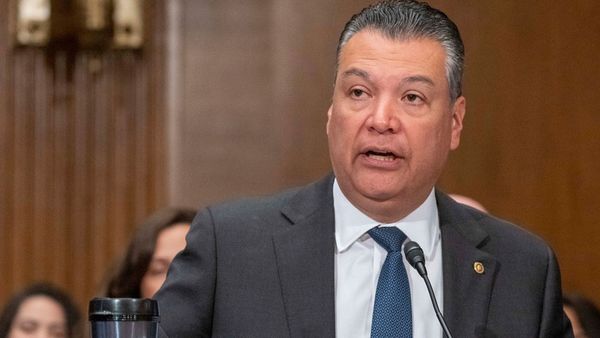
December 31, 2018
A National Crisis: Families Insured But Still in Debt
JoNel Allecia READ TIME: 4 MIN.
Robert and Tiffany Cano of San Tan Valley, Ariz., have a new marriage, a new house and a 10-month-old son, Brody, who is delighted by his ability to blow raspberries.
They also have a stack of medical bills that threatens to undermine it all.
In the months since their sturdy, brown-eyed boy was born, the Canos have acquired more than $12,000 in medical debt – so much that they need a spreadsheet to track what they owe to hospitals and doctors.
"I'm on these payment arrangements that are killing us," said Tiffany Cano, 37, who has spent her lunch hours on the phone negotiating payoff plans that now total $700 a month. "My husband is working four jobs. I work full time. We're a hardworking family doing our best and not getting anywhere."
The pair, who earn nearly $100,000 a year, are insured and have had no major illnesses or injuries. Still, the Canos are among the 1 in 4 Americans who report in multiple polls that the high cost of health care is the biggest concern facing their families. And they're at risk of joining the 62 percent of people who file for bankruptcy tied to medical bills.
"Oh, yes, that worry is always in the back of my mind," Tiffany said.
The family is part of a struggling group: middle-class folks who have followed the rules and paid for employer-based medical insurance, only to find that soaring health care costs – combined with high deductibles, high copayments and surprise medical bills – leave them vulnerable.
"I thought we'd be covered, and it's just not enough coverage at all," she said.
Robert Cano, also 37, had family health insurance for 2018 through his job as a manager at a large-chain retail store, for which he pays nearly $500 per month. The plan's $3,000 annual deductible and 40 percent coinsurance fees have added up faster than the Canos anticipated.
First came the nearly $4,000 bill from the in-network hospital where Brody was born Jan. 2, followed by separate fees from the anesthesiologist and the doctor who performed the routine delivery. Then, at 2 months, Brody was hospitalized with breathing problems doctors said could be related to allergies or asthma. In May, Tiffany came down with a stomach virus that sent her to the emergency room for drugs to treat nausea and dehydration. In October, the baby developed a bad case of bacterial conjunctivitis, or pinkeye.
"It's been, like, $300 here, $700 there," said Tiffany. "We had a hospital bill for him being sick of, like, $1,800." Unable initially to find a pediatrician she liked, Tiffany has agonized over whether to use the ER when Brody gets sick. When he had pinkeye, she debated whether to take him in, hoping it would get better on its own.
Then he got worse, she said, pulling up a photo on her phone of her son with half-moons of red, puffy flesh under his dark eyes.
"I let him suffer for a day like that," she said.
The Canos lost their first child, a girl, midway through her pregnancy in 2016. Tiffany acknowledges that experience has left her more anxious than the average first-time mom.
"It gave me so much fear that something would happen to him," she said.
As for their own health care needs, the couple put themselves lower on the priority list. Tiffany has used a prosthetic limb since childhood, when her lower left leg was amputated because of a birth defect.
She needs a new prosthesis because her body changed during pregnancy, but she can't see how to afford it.
A model suitable for the busy life of a working mom would easily cost $10,000 to $15,000, according to Tom Fise, executive director of the American Orthotic & Prosthetic Association.
"I try to push through," Tiffany said. "I put on that brave face of just walking, but it's so painful to walk. I have bruises all over my leg. I get blisters all the time." Lately, she's been wearing an old prosthesis, one she used in high school, because it's more comfortable.
The Canos don't know how exactly they fell into such debt, since they tried hard to make responsible decisions. After meeting three years ago, they knew quickly that they wanted to marry and have a family.
"I waited until I found the right guy," said Tiffany, who was thrilled when, in 2016, they were able to afford a 2,500-square-foot, two-story home in one of the stucco-and-tile neighborhoods an hour outside Phoenix.
But, taken together, the medical payment plans and premiums are almost as much as their $1,300 monthly mortgage. All told, the Canos spend about 15 percent of their annual income on health care, almost three times the average for non-Medicare households in the U.S.
That leaves too little for day care, car payments, gas, food and dozens of other domestic expenses, Tiffany said.
For 17 years, Robert Cano had comprehensive health insurance through his job as a soldier in the Army Reserve and paid little or nothing for medical care. He left the Army in 2017, however, after he learned he would be deployed for an extended time away from his wife and new son.
"I told them, 'I have to be at home,'" he recalled. The Army insurance ended on Dec. 31, 2017, two days before Brody was born.
That meant moving to his employer's insurance plan. Like more than 40 percent of 152 million Americans who get health insurance through work, the Canos are enrolled in a plan that demands thousands of dollars before any coverage kicks in.







